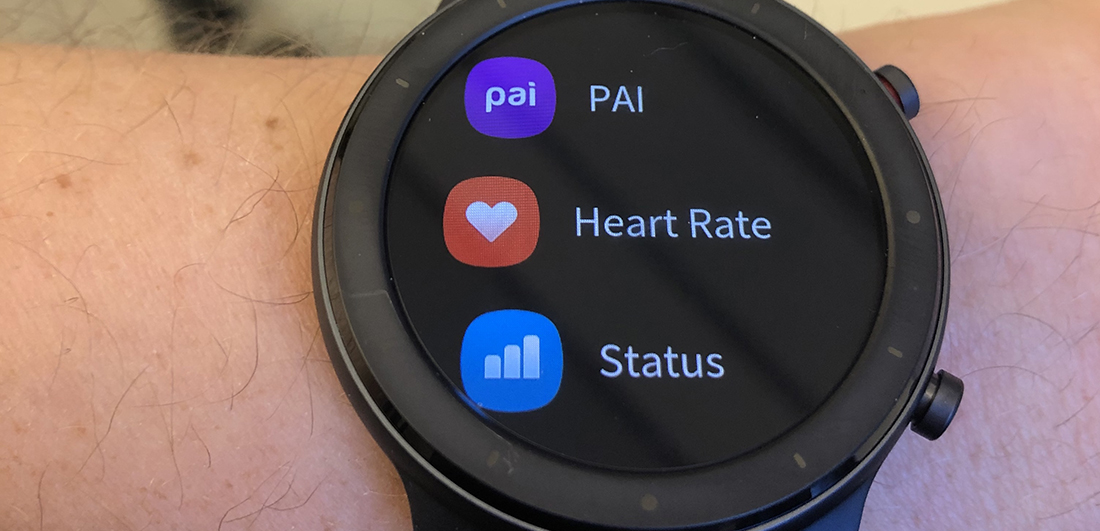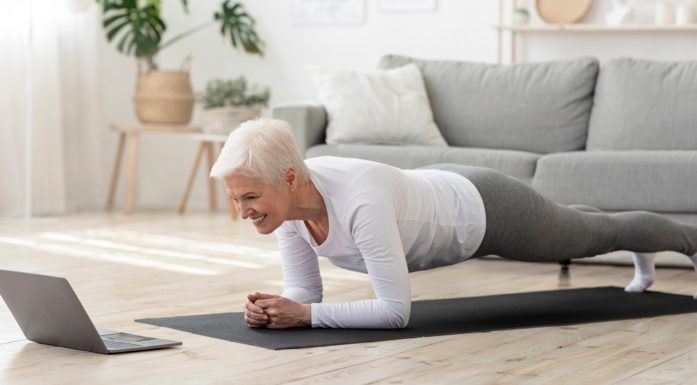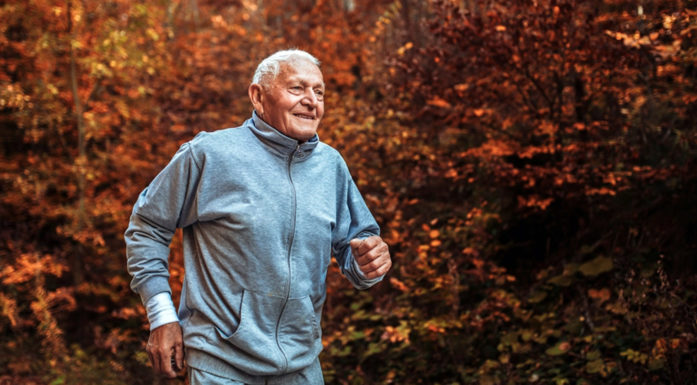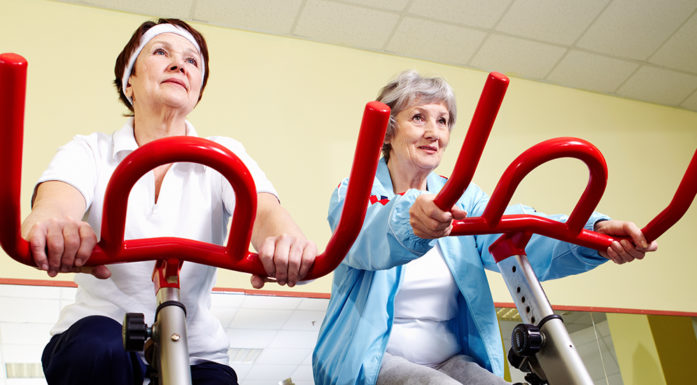PAI – a training tool to keep you young
Research from NTNU is now being integrated into millions of smartwatches worldwide. You work on a single training goal, and the fitness tracker tells you if you reach that goal. It may be the key to staying healthy.
It’s 7 January 2020, and we’re at the CES Fair in Las Vegas – the world’s largest technology trade show.
NTNU professor Ulrik Wisløff sits at the front of the hall where a new treadmill is being presented. As a professor of exercise physiology, Wisløff has seen plenty of treadmills, but this one is special.
First, it has a large screen mirror in the front that scans your body to see how much muscle and fat you have. Second, it comes with a digital instructor who trains with you.
Third, the treadmill measures PAI points.
“PAI is my invention. It stands for Personal Activity Intelligence, and it’s the only number you need in order to know if you’re doing enough exercise to achieve optimal health,” Wisløff explains.
PAI for the world
Actually, PAI isn’t totally new. In 2016, you could measure your personal PAI score if you had a specific activity bracelet. The new part is that now you can measure PAI using almost any kind of fitness tracker, as long as it measures heart rate.

Researcher Ulrik Wisløff at the CES trade show. At left is Kongqiao Wang, the head of artificial intelligence and algorithm development in Huami. Photo: PAI Health
Wisløff has set a tough target for himself of making PAI the new world standard for physical activity. He has already come a long way towards that goal. Right now, Chinese technology giant Huami is leading the race to offer PAI in the most user-friendly way possible.
Ulrik Wisløff has set a tough goal for himself of making PAI the new world standard for physical activity.
“In addition to its extraordinary treadmill, Huami has launched four new smartwatches with integrated PAI. The company has also developed noise reducing earbuds that measure heart rate and detect PAI. We’ve seen great interest in the new fitness trackers and the PAI concept here at the CES trade show,” says Wisløff.
100 is optimal
The point of PAI is to exercise enough so that you achieve at least 100 points in seven days – and then stay at 100 PAI or more for the rest of your life. The research being done by the Cardiac Exercise Research Group (CERG) and led by Wisløff shows that 100 PAI per week is exactly what it takes to keep your health risk as low as possible.
We’ll come back to this research, what sets PAI apart from other activity goals, and just how you can measure PAI with your smartwatch and mobile phone.
100 PAI a week is exactly what it takes to keep your health risk as low as possible.
But first we have to go back a few years to another Wisløff innovation that has taken the world by storm: the Fitness Age concept.
Calculator that estimates your fitness level
“We started by developing the Fitness Calculator, which estimates your fitness fairly accurately without needing to work up a sweat. Your fitness level may be the single factor that can reveal the most about your current and future health – even more than variables like smoking habits, blood sugar and body weight,” says Wisløff.
By comparing the calculator results with the average measurements from 5000 actual fitness tests, everyone who tries the Fitness Calculator will know how old their body actually is – what we call a person’s Fitness Age.
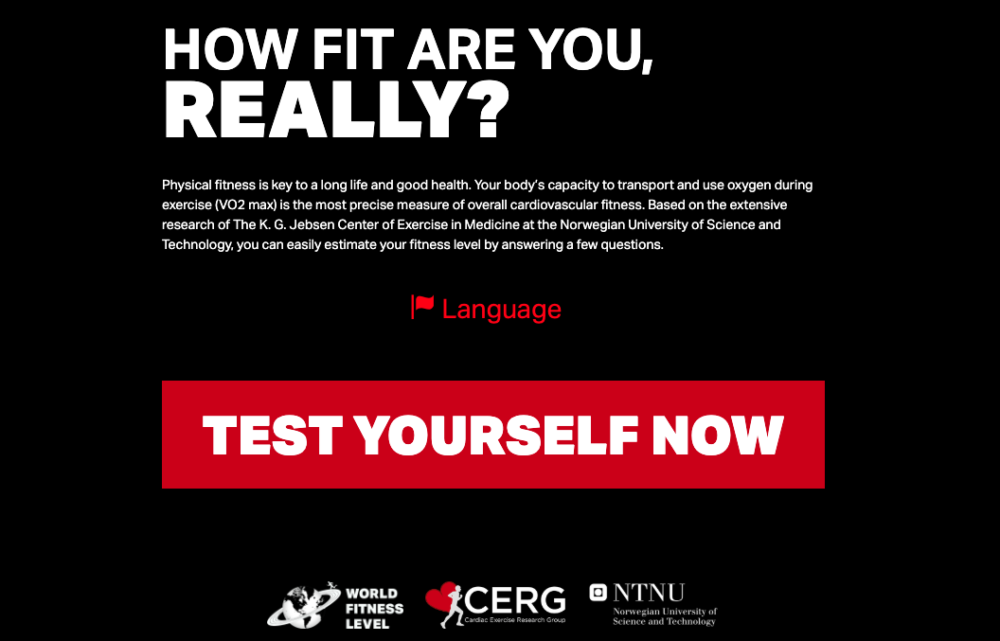
Your fitness level may be the single factor that can reveal the most about your current and future health. You can find your fitness age by clicking on the link a little further up in the article.
The Fitness Calculator quickly became a hit all over the world, causing NTNU’s website to crash when The New York Times provided a link to the calculator and wrote about the Fitness Age concept just over five years ago.
CERG’s research since then has shown that the calculator is not only a good measure of fitness, but also predicts life expectancy and the risk for a wide range of lifestyle diseases.
100 PAI keeps you young
This is probably where the key to PAI’s health effects lie.
CERG’s research shows that 100 PAI each week over time is enough to achieve a fitness age that is at least as low as your actual age.
“The Fitness Calculator lets you know how old your body actually is. The lower your fitness age, the more fit your body is. With PAI you can exercise your way to a lower fitness age, and likewise to lower disease risk,” says Wisløff.
The PAI score you achieve each week provides a good indication of how your fitness age develops over time. The latest mobile apps that estimate PAI also include an updated version of the Fitness Age concept, combining the results of the Fitness Calculator with the workout you are actually doing.
“We know that progress motivates and that the concept of fitness age has caught a lot of people’s interest. PAI is not just a tool that shows if you’re exercising enough each week. Using the PAI values you achieve over weeks and months, we can give you a very accurate measure of how much ‘younger’ the training has made you,” says Wisløff.
The research behind PAI
The story of PAI began in 2016 when Wisløff and his research colleagues at CERG published an article in The American Journal of Medicine.
They had developed the PAI algorithm based on the heart rate and health information from 5000 participants who had their fitness levels accurately tested. The people who trained enough to achieve 100 PAI or more each week had far fewer risk factors for lifestyle diseases than those who exercised less.
“But that in itself wasn’t good enough evidence that 100 PAI is good for people’s health. So we went back to data from the 1980s and calculated the PAI values for nearly 40 000 people who had participated in the North Trøndelag Health Survey (HUNT).
“It’s never too late to start collecting PAI points.”
“In that survey, participants had reported how often, how long and how hard they used to exercise. When we investigated how these people were doing 30 years later, we found that those who earned 100 PAI or more lived an average of five years longer than those who earned less than 100 PAI,” explains Wisløff.
Later, four more research articles on PAI were published.
Overall, the research shows that 100 PAI is also optimal for people who smoke, have high blood pressure or diabetes, or are overweight. 100 PAI per week is also linked to increased life expectancy for people who have been diagnosed with cardiovascular disease.
And last but not least: People who are active enough to maintain a score above 100 PAI have significantly better fitness levels than people under 100 PAI.
“Perhaps the most interesting result we found was when we followed up eleven years later on the 25 000 participants from the 1980s who had also answered the same questions in the next HUNT survey round,” Wisløff says.
The ones who earned 100 PAI in both the 1980s and 1990s lived an average of eight years longer than those with lower PAI scores.
Participants who had increased their activity level from under 100 to over 100 PAI between the two health surveys generally also gained many extra years of life, compared to those who were less physically active throughout the period,” says Wisløff.
In other words: it’s never too late to start collecting PAI points.
PAI is unique and personal
The PAI algorithm is based on your age and gender, in addition to your resting heart rate and maximum heart rate.
To measure PAI you need a heart rate monitor and an app on your mobile phone. Huami currently has the most user-friendly solutions today, but it is also possible to measure PAI with an Apple Watch, a Fitbit or a heart rate monitor watch from Garmin and Polar.
“We’re working hard to make it easier to calculate PAI no matter what kind of equipment you use to measure your heart rate,” Wisløff says.
“In early February, a brand new app – PAI Health – will be launched, and it will support a lot more manufacturers.”
And now you might be wondering why you should try PAI over one of the myriad other activity recommendations that exist?
A lot of people swear by walking 10 000 steps a day, for example. For Wisløff, the answer is simple: 100 PAI is a far better measure of how physically active you are than the number of steps you walk or the number of minutes you move.
Wisløff points out that goals like the 10 000 steps don’t take into account how hard you push yourself – in other words, how hard your heart works. “We know that higher intensity exercise produces faster health results than more moderate exercise. For example, you can walk 10 000 steps at a leisurely pace in the course of a day without much strain. But if you bike up a hill as fast as you can a few times, the effect on your heart and muscles will be far greater, even if you haven’t taken a single step,” he says.
With PAI, you can do whatever activity you want, whether it generates steps or not. The only thing that matters is that your heart rate increases. You also don’t have to train every day to reach 100 PAI in seven days. In fact, you can achieve that with only two workouts, assuming that the workout intensity is high enough.
“The amount of exercise that is enough for you to reach 100 PAI is not necessarily the same amount that your training buddy needs. PAI is based on your unique profile and your heart rate over a whole week. A well-trained person has to do more for each PAI point than someone who has a higher fitness age,” says the CERG professor.
PAI recommended by health authorities
The Norwegian Directorate of Health recommends that adults be physically active at moderate intensity for at least 150 minutes each week, or at high intensity for at least 75 minutes each week.
“These recommendations are good, but knowing what constitutes ‘moderate’ or ‘high’ exercise intensity isn’t necessarily easy,” says Wisløff.
“The heart rate monitor and the PAI app record the intensity for you, and will always tell you if you’ve done enough. That way you won’t have to worry about whether you need an extra workout to meet the week’s training recommendations,” he said.
Wisløff believes that 100 PAI is an even safer choice for maintaining good health than complying with the activity recommendations from the health authorities.
PAI rewards high-intensity training even more. It is possible to stay above 100 PAI by doing approx. 40 minutes of high intensity training each week. At moderate intensity, you have to exercise for more than 150 minutes every week to achieve the same result.
“Our research shows that people with 100 PAI have a reduced risk even if they don’t meet all the official activity recommendations. At the same time, people who are active enough to fulfil the recommendations do not reduce their risk if they still achieve less than 100 PAI per week,” says Wisløff.
He is now working for PAI to be included in the Directorate of Health’s recommendations, so that even more people can benefit from optimal physical activity.
“We have a good working relationship with the government, which sees PAI as a useful tool to motivate larger segments of the population to become physically active. We also know that several GPs have had great success using PAI to help their patients get started with long-term exercising,” he says.
“More than five million deaths in the world each year are due to people not being physically active enough. I am sure that PAI can give public health a boost by making physical activity fun for more people,” says Wisløff.
